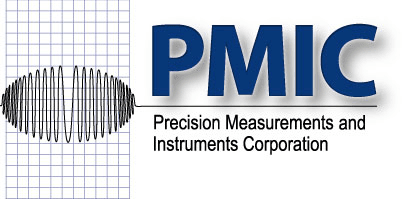Edge and End Effects of Low-Expansion in Thermal Expansion Measurements
Low-expansion graphite composites such as graphite face sheets, honeycomb panels, and similar materials have what PMIC refers to as edge and end effects, roughly depicted in Figure 1. These effects negatively influence length change measurement in Coefficient of Thermal Expansion (CTE) testing.

For graphite composites, the layup of the composite face sheets and core materials leads to incomplete nodes at the edges and ends of the specimens.
For honeycomb panels, there are incomplete cells at the panel edge. These incomplete cells lead to non-balanced symmetry problems with the attached face-sheets. The amount of the imbalance is a function of the stiffness of the face sheet material versus the core material, as well as the size of the spacing of the honeycomb core materials. For this reason, PMIC recommends testing at least three complete cells away from the edges or the ends of honeycomb panels to reduce the errors in the measurement.
ASTM E289 Michelson Interferometry uses mirror blades that are placed near the center and away from the ends and edges of the composite materials, determining the thermal expansion at the balanced section of the composite. A dilatometer rod can only rest on a single point on the edge of the specimen (see Figure 2). This point may have a lower or higher thermal expansion compared to its surroundings due to factors such as fiber layup and resin distribution. Where ASTM E289 measures the most stable section of the specimen, in the center, the dilatometer additionally captures the measurement at the edge.

Therefore, PMIC considers test results from a dilatometer for graphite composites, honeycombs, and similar types of materials to be less accurate than from a Michelson Interferometer in characterizing the material.
ASTM E228 dilatometry is often chosen as the test method for CTE testing, even with the increased edge and end effect errors. The customer may be repeating a previous test program or the errors associated with the edge and end effects are within the accepted uncertainties. PMIC uses advanced dilatometry techniques that are designed to reduce the errors in the standard push-rod or connecting-rod dilatometry techniques. These advanced techniques provide an accurate measurement but with higher uncertainties than the ASTM E289 Michelson Laser Interferometry systems.
Edge and end effects also play a part in PMIC’s recommended sample sizes. If the sample size is too small, then the results can be dominated by the matrix materials. Although PMIC E289 Michelson Interferometry test systems can be set up to accommodate custom specimen sizes, the recommended test specimen size for X-axis and Y-axis testing is 177.8 mm (7.0”) by 50.8 mm (2.0”), with the longer dimension being the axis of measurement. This sample size was determined to increase the region of representative measurement and reduce measurement error.
A full description of PMIC’s thermal expansion measurement services is available here. If you would like to request further information, you can start an inquiry with PMIC’s sales team or email PMIC experts at [email protected].
More information about the edge and end effects of composites is available in Introduction to the Dimensional Stability of Composite Materials, written by PMIC’s founder, Dr. Ernest Wolff.
Wolff, Ernest G. 2004. Introduction to the Dimensional Stability of Composite Materials. Lancaster, PA: DEStech Publications, Inc.

